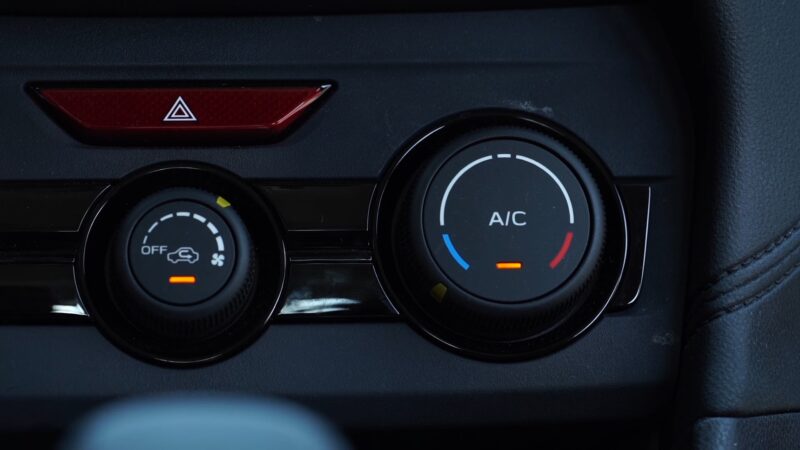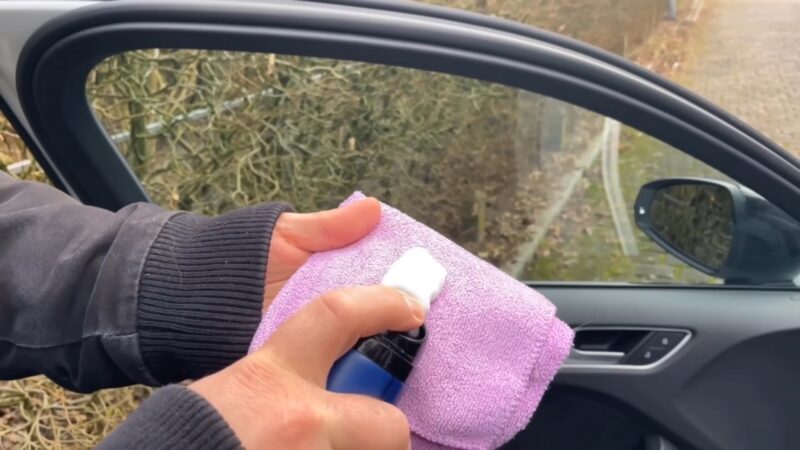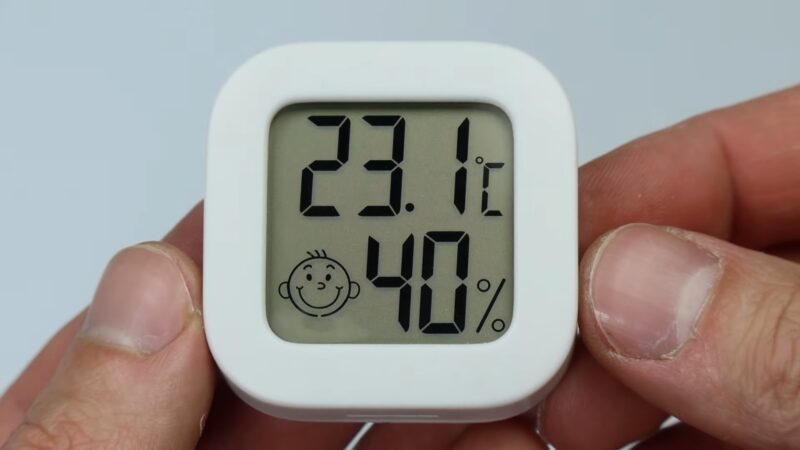It’s a scenario that most of us have found ourselves in: you’re driving along, a gentle rain morphing into a full-on downpour when you suddenly realize your windshield is fogging up. As the cloudiness spreads, your field of vision narrows, heightening the risk of an accident. Don’t fret! A foggy windshield isn’t a life sentence, and there are several effective strategies you can implement to clear it up.
This guide aims to arm you with knowledge and practical tips on how to defog your windshield when it’s raining. With these solutions in your toolkit, you’ll be prepared to navigate the misty labyrinth that is a fogged-up car window.
Why Does My Windshield Fog Up?
Understanding the science behind foggy windshields can help you find the most effective solutions. In essence, fogging occurs due to condensation. When warm, humid air comes into contact with a cold surface, it releases some of its moisture, which then forms a misty layer on the cold surface—in this case, your windshield.
Relative Humidity and Its Impact
Relative humidity is the percentage of water vapor in the air relative to the maximum amount it can hold at a given temperature. On a rainy day, the outside air is often cooler than the air inside your car, especially if you have the heater on. High relative humidity inside the car leads to fogging when this warm, moist air meets the colder windshield.
How Your Car’s HVAC System Plays a Role
The Heating, Ventilation, and Air Conditioning (HVAC) system in your car is a vital player in this foggy game. It can either be your best friend or your worst enemy when it comes to dealing with a foggy windshield. Learning how to properly adjust these settings can make a huge difference.
Why You Should Never Ignore a Foggy Windshield

1. The Safety Aspect
A foggy windshield is more than just an inconvenience; it’s a safety hazard. Reduced visibility can hinder your ability to make quick judgments on the road, increasing the risk of collisions. Every year, poor visibility is a contributing factor in thousands of road accidents.
2. Legal Ramifications
Driving with a foggy windshield can also get you into legal trouble. In many jurisdictions, it’s considered a form of reckless driving. If pulled over, you could be slapped with a fine, or even have points added to your driving record.
3. The Importance of Proactive Measures
The key to combating foggy windshields lies in being proactive rather than reactive. Understanding the conditions that lead to fogging and taking steps to mitigate them can save you both hassle and potential danger.
Immediate Actions to Take

Cranking Up the Air Conditioning
- Why it Works: AC removes moisture from the air, reducing the interior’s relative humidity.
- How to Do it: Turn the AC on and set it to blow air on the windshield.
Open the Windows
A quick way to equalize the temperature and humidity levels inside and outside your car is by slightly opening the windows. This allows the warm, humid air inside the car to escape, reducing the chances of it condensing on the windshield.
Using the Defrost Function
The defrost function is specifically designed to deal with foggy windshields. It operates by blowing warm, dry air onto the glass, thus evaporating the condensed moisture. Make sure you know where the defrost button is located in your car and how to use it effectively.
Long-Term Strategies

Regular Maintenance
Keeping your car’s HVAC system in good condition is crucial for preventing foggy windshields. Regularly replace filters and check the system for any problems that may hinder its efficiency.
Window Treatments
There are special hydrophobic treatments available that can be applied to your windshield to repel water, including the condensation that causes fogging. These treatments are usually long-lasting and can be a part of your regular car maintenance routine.
Ventilation Tips
- Always Use Fresh Air Mode: Recirculated air increases humidity. Always opt for fresh air when using your car’s HVAC system.
- Adjust Air Vents: Make sure the vents are directed towards the windows and not the passengers.
Products That Can Help
Anti-Fog Sprays and Wipes
These are readily available and are a convenient way to prevent fogging. Just apply them to the inside of your windshield as part of your cleaning routine.
Portable Dehumidifiers
Designed for cars, these portable units can significantly reduce the level of humidity inside your vehicle, making it less likely for the windows to fog up.
Microfiber Cloths
Always keep a microfiber cloth in your glove compartment. They’re excellent for wiping away fog without leaving streaks on your windshield.
Common Myths Debunked

Myth: Rubbing Shaving Cream Helps
While it’s true that some people claim success with this home remedy, there’s no scientific evidence supporting its long-term effectiveness.
Myth: Hot Air Is Bad
Hot air is not necessarily bad; it’s more about the humidity level in the air. Hot, dry air can actually help in evaporating the condensation faster.
Myth: You Should Always Use Recirculate Mode
As mentioned earlier, using recirculated air can actually exacerbate fogging because it increases humidity levels inside the car.
A Closer Look at Car HVAC Systems
The Functionality
HVAC systems in modern cars are far more sophisticated than they used to be. They can heat, cool, and even dehumidify the air in your car’s cabin. Knowing how to tweak these settings for optimal defogging is invaluable.
For example, many cars come with climate control systems that automatically adjust to meet your needs. Understanding how to override these settings can be the key to quickly defogging your windshield.
Common Problems Leading to Fogging
Sometimes, even if you think you’re doing everything right, that stubborn fog won’t go away. This could be due to underlying issues with your HVAC system. These may include a malfunctioning AC compressor, clogged vents, or faulty temperature sensors. If you’ve tried all the immediate actions to no avail, it might be time for a professional check-up.
Maintenance Tips
Regular maintenance is not just for your car’s engine and wheels. Your HVAC system needs love too. This can range from simple actions like routinely cleaning the air vents to more involved tasks like changing cabin air filters or even coolant fluids. Doing so will not just contribute to fog prevention but can also improve the overall air quality in your car.
Advanced Strategies for Prevention

The Role of Airflow Dynamics
Airflow dynamics in a car can get complicated, but mastering them can give you an edge in fighting windshield fogging. Proper airflow ensures even temperature distribution, reducing the likelihood of fogging. If your car has adjustable vents, make sure they’re aimed to allow for optimal air circulation, especially towards the windshield.
Electronic Gadgets to Monitor Humidity Levels
There are small, affordable gadgets that can be placed inside your car to constantly monitor temperature and humidity levels. When these levels approach the fog-inducing zone, you can take preemptive measures to stave off condensation.
Modification for High-Risk Zones
If you live in an area where fogging is a constant problem due to high humidity or colder climates, you may want to look into more permanent solutions. These could include installing advanced defogging systems that integrate with your car’s electronics and provide real-time adjustments to combat fogging.
Eco-Friendly Alternatives for Fog Prevention
1. DIY Natural Anti-Fog Solutions
For those interested in minimizing their carbon footprint, there are eco-friendly alternatives for anti-fog treatments. Simple home remedies such as a vinegar-water solution can sometimes be effective. Simply spray it onto your windshield and wipe it off for a natural defogging agent.
2. Energy-Efficient HVAC Systems
Electric and hybrid cars often come with more energy-efficient HVAC systems. Not only do these consume less energy, but they are often better at maintaining ideal humidity levels inside the car, reducing the chances of fogging.
3. The Impact of Sustainable Driving Practices
Driving at lower speeds, avoiding rapid temperature changes, and other eco-friendly driving practices can contribute indirectly to reduced fogging. This is because these actions often help maintain a more stable environment inside the car.
FAQs
What is the key to eliminating windshield fogging?
The key is to equalize the temperature and moisture levels on the inside and outside of your windows.
Why is it important to turn off air recirculation while defogging?
Air recirculated through the cabin won’t lose any moisture. Turning this feature off allows you to exchange the warm, humid air inside for the cool, drier air outside.
Can a failing part in my car prevent my windshield from defogging?
Yes, any number of damaged parts in your HVAC system could be to blame, such as a bad A/C receiver drier, clogged dashboard vents, or a broken thermostat in your engine’s cooling system.
How does the A/C help in defogging the windshield?
The air conditioner removes moisture from air passing over its cooling coils, making the air drier and less likely to fog up the windshield.
Can wet clothes and umbrellas contribute to windshield fogging?
Yes, wet clothes, umbrellas, snowy boots, or additional passengers can raise the temperature and moisture level inside your vehicle, increasing the likelihood of fogging.
Can my windshield fog up even in warm weather?
Yes, in warm weather, fogging occurs on the exterior of your windshield when warm, humid air from outside condenses against a windshield that’s been cooled by air conditioning inside the cabin.
Final Words
Understanding how and why your windshield fogs up is the first step toward solving the problem. By taking immediate action and investing in long-term strategies, you can greatly reduce the occurrence of fogging in your car.
With clearer windshields, you’re not just making your own drive safer; you’re contributing to overall road safety. Don’t let a foggy windshield cloud your vision or your judgment.
Take proactive steps to ensure you always have a clear view of the road ahead.
